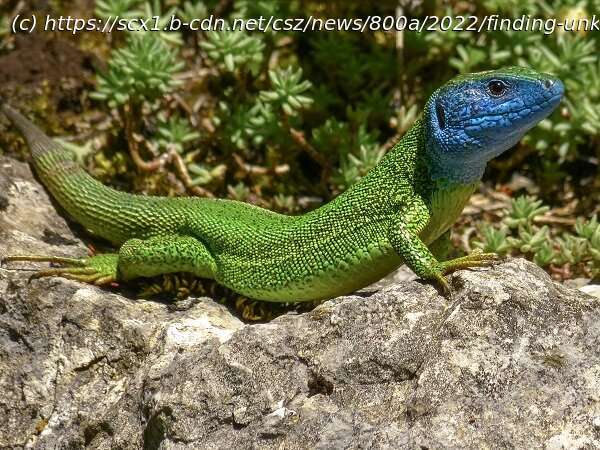The evolutionary clade and biodiversity of green lizards of the genera Lacerta and Timon—reptiles common in the Mediterranean basin and surrounding areas of the European continent, North Africa and Asia—have never been studied in detail from the perspective of historical biogeography. Now, a paper published in the Journal of Biogeography presents a new scenario for deciphering the potential evolutionary processes that have acted—separately or together—to give rise to the biodiversity of species in this group in Mediterranean ecosystems.
The evolutionary clade and biodiversity of green lizards of the genera Lacerta and Timon—reptiles common in the Mediterranean basin and surrounding areas of the European continent, North Africa and Asia—have never been studied in detail from the perspective of historical biogeography. Now, a paper published in the Journal of Biogeography presents a new scenario for deciphering the potential evolutionary processes that have acted—separately or together—to give rise to the biodiversity of species in this group in Mediterranean ecosystems.
The study is led by the researcher Antigoni Kaliontzopoulou, from the Faculty of Biology and the Biodiversity Research Institute (IRBio) of the University of Barcelona. Teams from the National Museum of Natural Sciences (MNCN-CSIC), the University of Vigo and the University of Porto (Portugal), among other institutions, are also participating.
The hidden history of the evolution of green lizards
Today, green lizard populations are threatened by numerous factors: the destruction and fragmentation of their natural habitat; the disappearance of traditional agricultural practices; the use of pesticides; the increase in cat populations in humanized areas; climate change, and, in addition, the fatal accidents they suffer on roads. However, although there are indications that some populations are in decline, the International Union for Conservation of Nature (IUCN) has not yet listed these reptiles as endangered species.
According to previous studies, the evolution of the green lizard group was the result of a combination of evolution and the conservatism of ecological niches, “but the relative role of geological history and niche dynamics had not yet been tested,” says Antigoni Kaliontzopoulou, a member of the Department of Evolutionary Biology, Ecology and Environmental Sciences of the UB.






